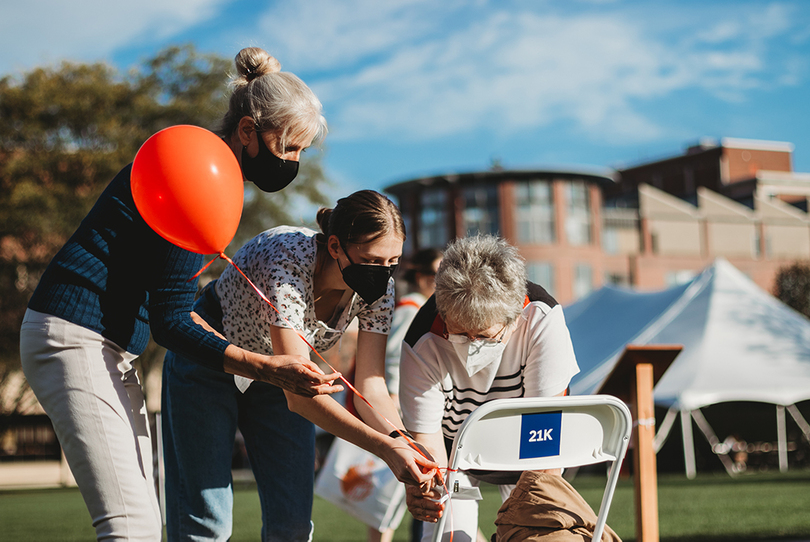Miriam wrote in her last letter to my mom, “I’m sitting here on an absolutely perfect Autumn day in Kensington Park. It’s a huge beautiful vast place not too far from where I live. It’s one of those days when you feel so happy to be alive. I miss you, Tami.”
I never met Miriam. Unfortunately, I never will.
As a Remembrance Scholar, I feel as if I know her better than I ever have. I can see her smiling and sitting on that hill. I know my mom can, too.
When I called my mom on a cold October morning this year, I asked her an important question: “What was Miriam’s favorite song?” She vividly recalled how excited Miriam was to sing “Someone to Watch Over Me” by George Gerswhin for a cabaret she was in. Miriam loved the song as a ballad, but she was told to sing it up tempo as it was “originally written,” which my mom said made her so mad.
After that conversation with my mom, I immediately knew I had to showcase the song at the Celebration of Life, a night full of song, speech, dance and love to celebrate the lives of those lost. But if I sang it live, I knew I would burst into tears.
A couple days before my performance, I sent a rough recording to a couple of Miriam’s past scholars and a few of my close friends to make sure it sounded OK. I was going to sing the song as Miriam wanted to sing it, as a ballad.
The night before the Celebration of Life, I tried recording a few more takes but was not completely satisfied with what I had recorded. Sitting on a bathroom floor, I felt my throat grow dry from attempt after attempt. My fears of the stage were coming back, but I knew this was bigger than me.
I quickly ran downstairs and threw on a plain black shirt, carefully placed my Remembrance pin of Miriam over my heart and recorded a few video versions of my performance. The very last take I knew was the one I had to show to the audience.
Leading up to the event, my heart was racing, and when I was introduced to the large turnout, my heart nearly stopped. I felt as if I was about to faint, but I took a deep breath and glued my eyes to my pre-written introduction. As I read through my introduction before my recorded piece, my voice wavered. Thankfully, no tears interrupted my remarks.
My mom gasped when the song started. No one in my family knew I was going to sing.
As the recording played, my best friend Elizabeth Billman, another Remembrance Scholar who represents Timothy Cardwell, squeezed my hand. I knew it would be all right even as tears pricked the corners of my eyes.
Once the video concluded, I didn’t hear the applause or the cheering around me. I focused on finding my mother in the crowd. Once I did, I felt my tears start once again — happy tears. After the event, my mom told me Miriam would’ve been so proud.
My mom always said that Miriam would have been my sisters’ and my number one supporter in life, and she is. She’s still here with us in our hearts. Miriam is that someone who watches over my family and those who remember her always and forever.
The performance wasn’t entirely for me. It was for Miriam, my mother and their beautiful relationship. It isn’t about me singing; it’s about the song. It’s about the memories embedded in that song. It’s about love.










